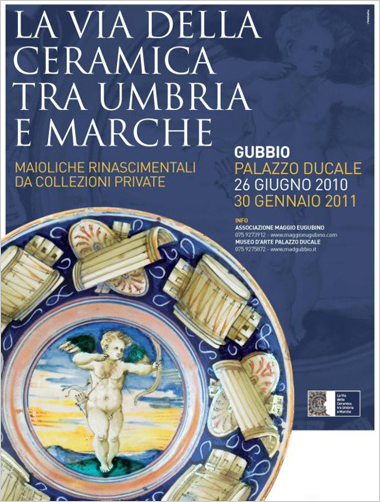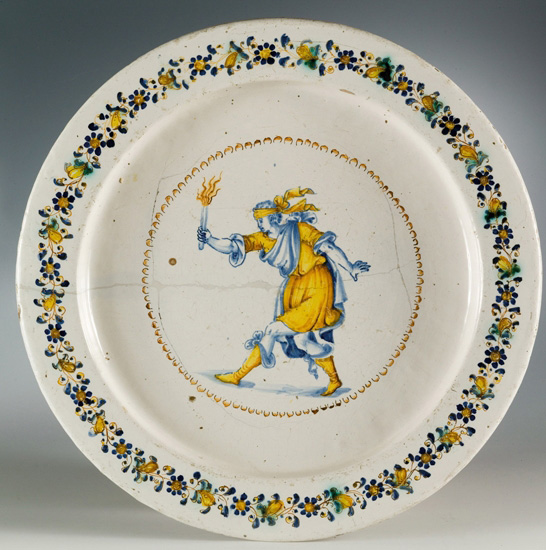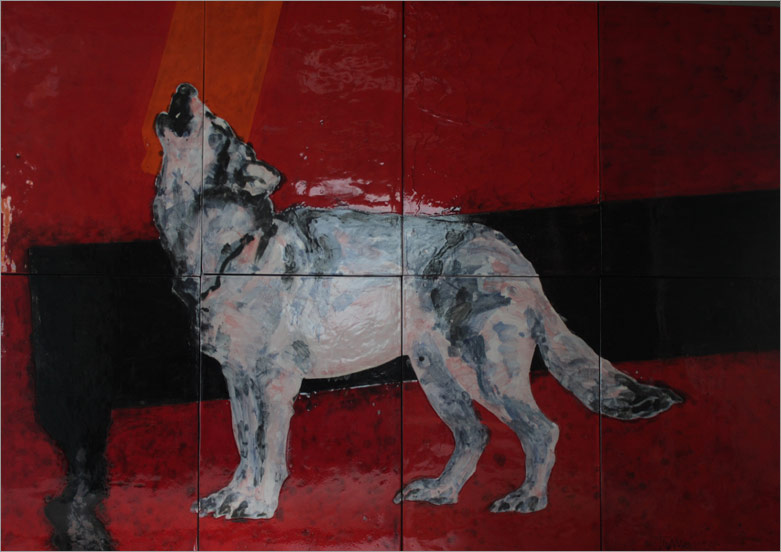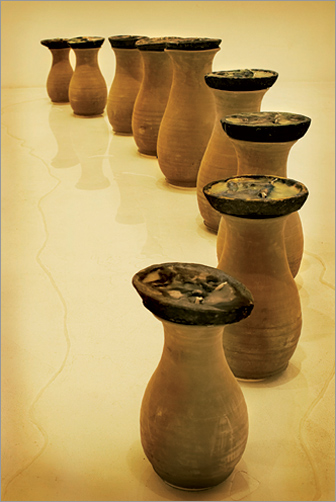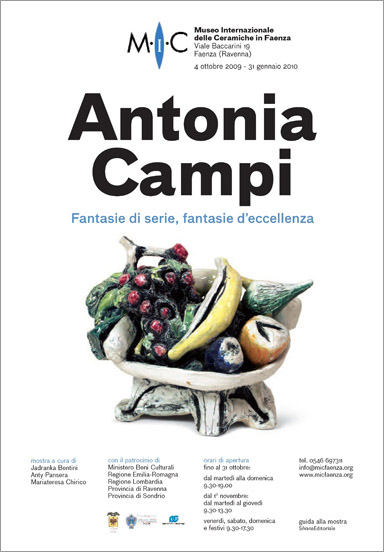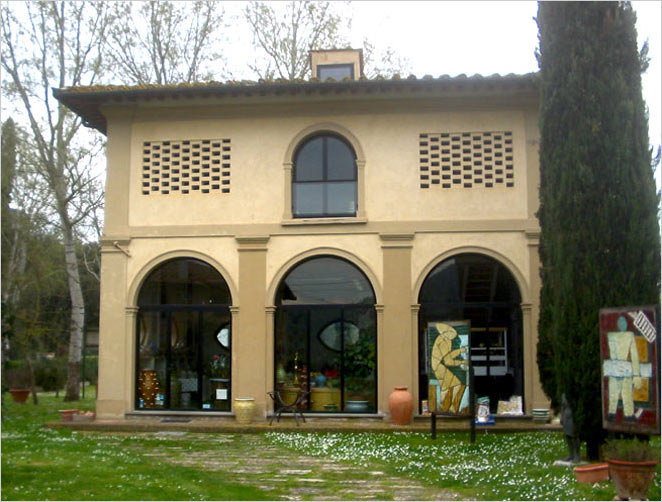June 16, 2010 – January 30, 2011
Gubbio – Italy
The Pottery Route evokes the geographic and artistic connection among Deruta, Gubbio, Castel Durante (now Urbania), Urbino and Pesaro, which were important pottery making hubs during the Renaissance. And so most of them are now.
At the time the route was actually very busy. Artists and merchants traveled from one village to the other to trade their talent or their goods.
Gubbio enjoyed a strategic position on the trail because it belonged to the Duke of Urbino, who owned most of the Marche and was known to encourage and protect Arts, but it was located near Perugia and Deruta, which had their own peculiar artistic style

